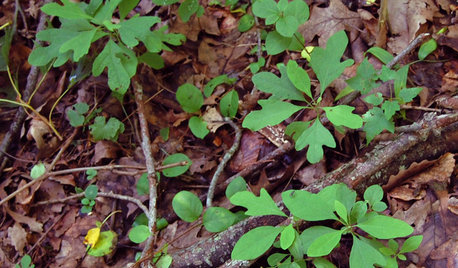Pipevine Swallowtail Today
biophilia
18 years ago
Related Stories

GARDENING GUIDES6 Plants That Beat Butterfly Bush for the Wildlife Draw
It's invasive, a nonnative and a poor insect magnet. Check out these better alternatives to butterfly bush in the garden
Full Story
PLANTING IDEASWant a More Colorful, Natural Garden? Try a Perennial Meadow
Spend less time tending and more time taking in the sights by improving on Victorian and prairie garden designs
Full Story
GARDENING GUIDESGreat Design Plant: Sassafras Albidum
This eastern native tree has beautiful foliage, a spicy aroma and a rich history
Full Story
GARDENING FOR BUTTERFLIESButterfly Gardening: Delight the Eyes With Living Sculptures
Surprise and thrill with a garden that attracts magical winged creatures, bringing color, movement and life
Full Story
GARDENING FOR BUTTERFLIESGardening for the Bees, and Why It’s a Good Thing
When you discover how hard bees work for our food supply, you may never garden without them in mind again
Full Story
GARDENING GUIDESGarden-Friendly Native Alternatives to Overplanted Exotics
There are lots of gorgeous, wildlife-friendly native plants ready to make an appearance in your garden
Full Story
GARDENING GUIDESAttract Hummingbirds and Bees With These Beautiful Summer Flowers
Roll out a welcome mat for pollinators to keep your landscape in balance and thriving
Full Story
GARDENING FOR BUTTERFLIESBe a Butterfly Savior — Garden for the Monarchs
Keep hope, beauty and kindness alive in the landscape by providing a refuge for these threatened enchanters
Full Story
GARDENING FOR BUTTERFLIES7 Native Wildflowers to Make You an Awesome Butterfly Host
Offer the leaves of these and you’ll get more butterflies than with flower nectar alone
Full Story
GARDENING FOR BUTTERFLIES3 Ways Native Plants Make Gardening So Much Better
You probably know about the lower maintenance. But native plants' other benefits go far beyond a little less watering and weeding
Full StorySponsored
More Discussions




catlunatic
gcertain
Related Discussions
Spring Must Be Close.....
Q
Pipevine Swallowtail Eggs and Emerging Zebra Swallowtail!
Q
Found my first Pipevine babies : )
Q
North Little Rock AR - checking in w update
Q
frecklejuice
tdogmom
emmayct
sowngrow (8a)
mcronin
emmayct
catlunatic
MissSherry
mjkerkau
biophiliaOriginal Author
susanswoods
susanlynne48
biophiliaOriginal Author
MissSherry
Msrpaul
biophiliaOriginal Author
Msrpaul
loess_roots
MissSherry
biophiliaOriginal Author
MissSherry
biophiliaOriginal Author
susanlynne48
MissSherry
biophiliaOriginal Author
MissSherry
biophiliaOriginal Author
mboston_gw
linda_centralokzn6
biophiliaOriginal Author
biophiliaOriginal Author
mcronin
MissSherry
biophiliaOriginal Author
biophiliaOriginal Author
runnymede
susanlynne48
linda_centralokzn6
runnymede
lorideland
mcronin
biophiliaOriginal Author
biophiliaOriginal Author
gcertain
biophiliaOriginal Author
gcertain
biophiliaOriginal Author
texaspuddyprint